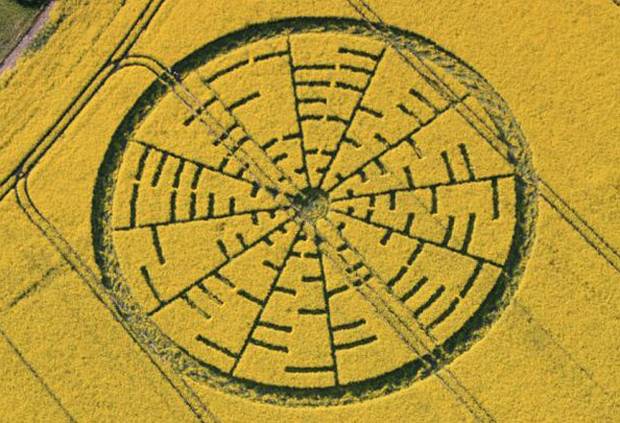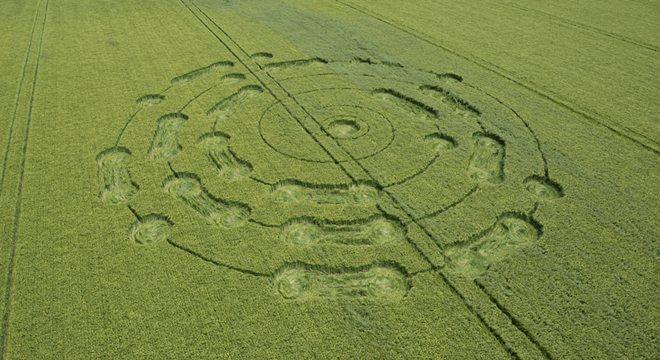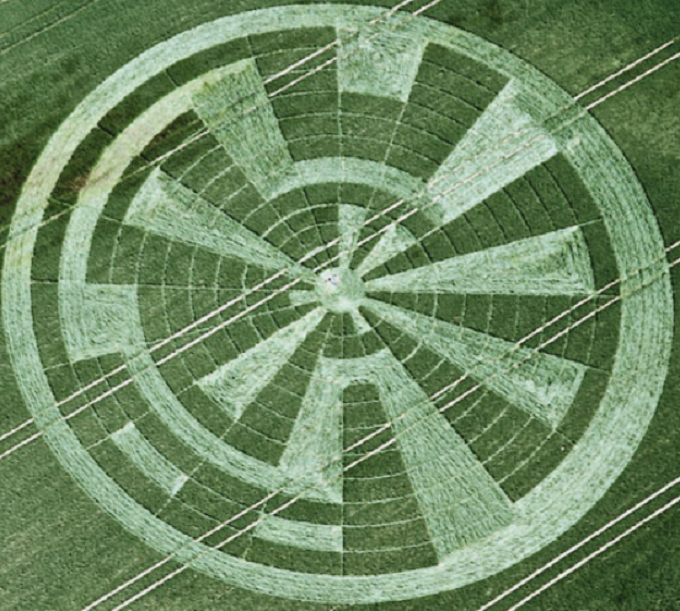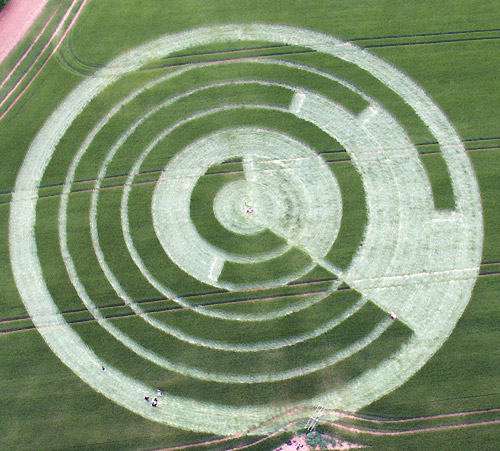
Crop Circles
In 2012 I was approached by two TV producers, one freelance and one at the BBC, who were looking to make a documentary about crop circles. The aim was to shed light on the motivations and backgrounds of the people who make them.
The producers had heard claims that certain circles feature very advanced maths, and wanted me to establish the veracity of the claims by deciphering the patterns and establishing the level of mathematical ability required to make them.
The documentary is still in production, but I've now seen a few seasons of crop circles come and go. Many circles do contain hidden messages. To work out if a pattern is likely to contain information the first task is to establish the smallest asymmetrical unit. For example, if the pattern has 4-fold rotational symmetry only 1/4 of it can contain information - the other 3/4 are repeats, by definition. On various occasions I've spent half an hour trying to decode a pattern before realising it's almost completely symmetrical!
Below I've put pictures of some patterns which I was able to decipher, so you can have a go yourself without worrying that you might be wasting hours of your life on an impossible task. I've also put some patterns I haven't been able to solve, but which I think could contain information. If you are able to solve them please let me know!
Solved Patterns

Please note that the aliens made a typo in the above image. It would make their job a lot easier if they were to write future messages in English.


Unsolved Patterns

There is a lot of symmetry in this one, but I still think the asymmetrical unit may have something in it. The upside down paragraph below contains a couple of observations - hover over to reveal it:
Three columns of (sixteen by three). The third column marches the first, sixteen suggests two ASCII characters in binary (as you've probably gathered, aliens like ASCII/binary mixes), they have also been known to use braille, viewed as a tetris game the central column is the same pattern shifted down.

Another idea:
Dartboard? If mimicking a real distribution we'd expect exactly one pair of opposites to be very asymmetrical (which would tell you where twenty and one are), this doesn't seem to work.
